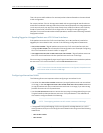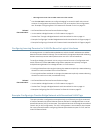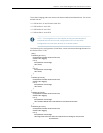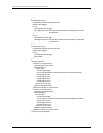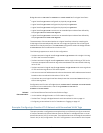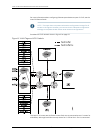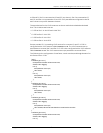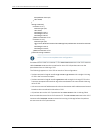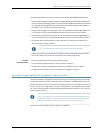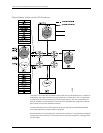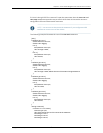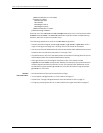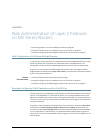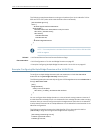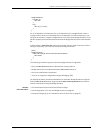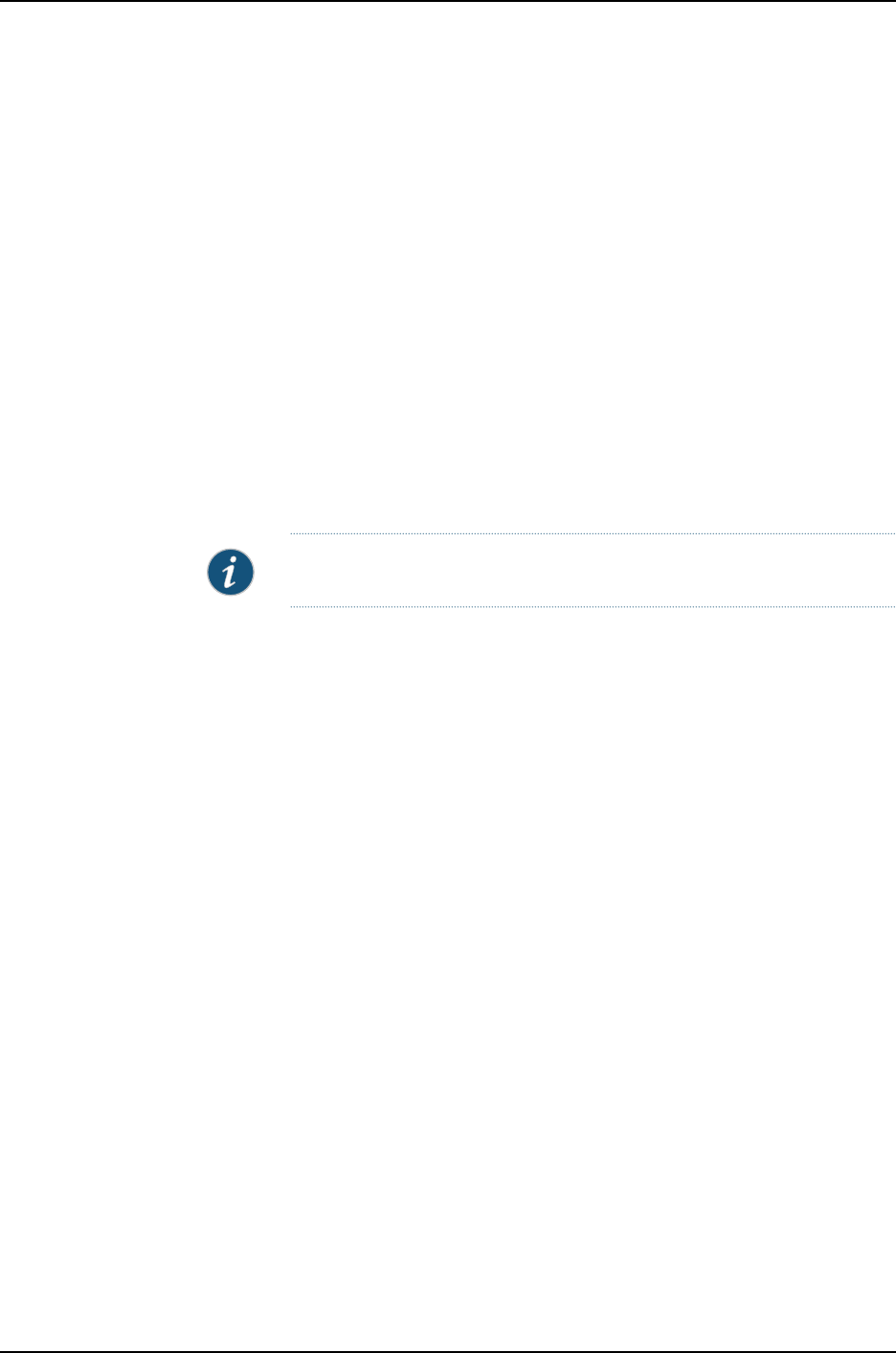
encapsulation vlan-vpls;
vlan-id 302;
}
}
routing-instances {
customer-c1-vsi {
instance-type vpls;
vlan-id 100;
interface ge-1/0/0.1;
interface ge-2/0/0.1;
interface ge-3/0/0.1;
} # End of customer-c1-vsi
customer-c2-vsi {
instance-type vpls;
vlan-idnone;#ThiswillremovetheVLANtagsfrompacketssenton VPLS forcustomer
2
interface ge-1/0/0.11;
interface ge-6/0/0.11;
} # End of customer-c2-vsi
} # End of routing-instances
NOTE: This is not a complete router configuration.
Consider the first VLAN for customer C1. The vlan-id 100 statement in the VPLS instance
called customer-c1-vsi sets the normalized VLAN to 100. All packets sent over the
pseudowires have a VLAN tag of 100.
The following happens on VLAN 100 as a result of this configuration:
•
Packets received on logical interfaces ge-1/0/0.1 or ge-2/0/0.1 with a single VLAN tag
of 100 in the frame are accepted.
•
Packets received on logical interface ge-3/0/0.1 with a single VLAN tag of 200 in the
frame are accepted and have their tag values translated to the normalized VLAN tag
value of 100.
•
Unknownsource MAC addressesand unknown destination MAC addresses arelearned
based on their normalized VLAN values of 100.
•
All packets sent on the VPLS pseudowire have vlan-id 100 in their VLAN tag fields.
Nowconsiderthe secondVLAN for CustomerC2. The vlan-id nonestatement inthe VPLS
instance called customer-c2-vsi removes the incoming VLAN tags before the packets
are sent over the VPLS pseudowires.
Copyright © 2010, Juniper Networks, Inc.54
Junos 10.4 MX Series Ethernet Services Routers Solutions Guide



